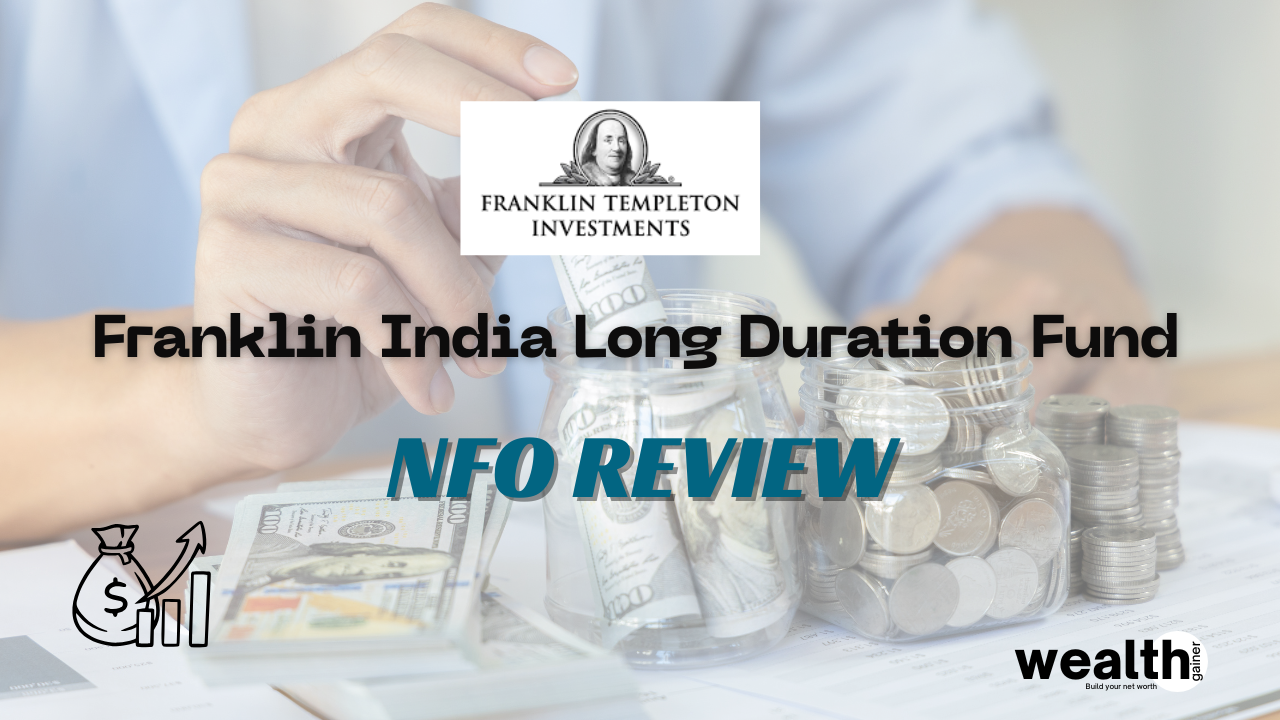1. What is the Franklin India Long Duration Fund?
Launch date: 11 December 2024 .
Fund type: Open‑ended debt scheme in the “Long Duration” category
Objective: Invest in debt and money market securities such that the portfolio’s Macaulay duration exceeds 7 years .
Risk level: “Moderate to Moderately High”—sensitive to interest rate fluctuations.
Plans available: Direct Growth, Direct IDCW, Regular Growth, etc. Most data pertains to the Regular Growth version.
2. Key Facts & Figures
NAV (Growth – Regular plan): ~₹10.38 as of 3 July 2025.
AUM: ₹27–30 crore as of June–July 2025
Expense Ratio: ~0.86% for Regular plan; Direct plan likely around 0.3%–0.4%.
Minimum investment: ₹5,000 lump‑sum; ₹500 SIP (₹1,000 in some sources).
Exit Load: None.
3. Performance and Returns
Since inception (Dec 2024–July 2025): ~3.8% CAGR
12-month period metrics:
6‑month return ~5.36%; YTD ~5.96%
It ranked high within its category over 6‑month and YTD periods (1st or 2nd)
Category performance comparison:
Category average for 1‑year ~7.94%, 3‑year ~9.2%, 5‑year ~5.37%
But since this scheme is less than one year old, long‑term comparisons are limited.
Summary: While returns since inception have been modest (~3.8%), the fund has delivered 5–6% over recent months, though still trailing category averages over longer periods—but those comparisons include older, more established funds.
4. Portfolio Composition & Risk
Asset allocation (as of June 2025):
~65% in government bonds (notably 6.9% GOI 2065 ~58% of portfolio), ~31% corporate bonds, ~34–35% cash & cash equivalents
Modified duration: ~4.06 years, compared to category average ~5.57 years (Moneycontrol data).
Yield to maturity (YTM): ~6.68% vs category avg ~6.72% .
Observations: The portfolio is heavily sovereign‑oriented, modestly exposed to credit risk, and retains significant liquidity in cash. Its shorter duration than category average helps reduce rate‑risk sensitivity, though it may limit upside in falling interest rate environments.
5. Risk & Limitations
Interest rate sensitivity: Long duration funds inherently fluctuate when rates move. This fund, with shorter duration (~4 years), is somewhat less volatile—but still sensitive to bond yields .
Liquidity & scale: AUM remains small (~₹30 crore), which may affect liquidity and scalability. New launches from Franklin are watched carefully given past credit fund closures in 2020 .
Track record: Being less than a year old, it lacks long‑term performance data or consistency across interest rate cycles.
6. Who Should Consider Investing?
Suitable for:
Investors seeking moderate risk fixed income exposure with some interest rate sensitivity.
Those with a 5–7+ year horizon, willing to weather short‑term volatility.
Conservative investors preferring a fund with high sovereign allocation and liquidity.
Not ideal for:
Investors chasing higher yield/returns—other long duration peers offer higher 1‑ to 3‑year CAGRs (~8–9%+).
Risk‑averse individuals who prefer short-duration or ultra-short duration funds with minimal rate risk.
Any investor expecting long-term performance track record from this recent launch.

7. Taxation Snapshot
If purchased on or after 1 April 2023, capital gains will be added to your income and taxed per your slab rate, whether held short or long term .
There is no indexation benefit for debt gains post‑2023. Dividends (if opted) are taxed per slab and TDS applies above ₹5,000/year.
8. Final Verdict (Should You Invest?)
Pros:
Reasonable recent returns (~5–6% YTD).
Government-heavy portfolio with moderate duration (~4 years).
No exit load; low minimums; direct plan option available.
Ideal for steady, moderate-risk fixed income exposure.
Cons:
Short track record; underwhelming since inception returns (~3.8%).
Modest AUM might imply lower liquidity or awareness.
Trailing category peer performance on longer periods indicates growth potential, but uncertainty remains.
Recommendation:
If you seek a moderate-risk debt fund with decent liquidity and prefer a conservative portfolio structure, you may allocate a portion (say, 5–10%) of your fixed-income allocation here. However, for those targeting higher yield or proven multi-year performance, consider longer-established long-duration funds like Nippon India Nivesh Lakshya, ICICI Prudential Long Term Bond, or HDFC Long Duration Debt, which have demonstrated ~7–9% CAGRs.
And if rate risk is a concern, sticking to short-duration or ultra short-duration funds may suit you better.
Summary Table
| Feature | Details |
|---|---|
| Launch Date | 11 Dec 2024 |
| NAV (Jul‑Aug 2025) | ~₹10.38–10.44 |
| AUM | ₹27–30 crore |
| Expense Ratio | ~0.86% (Regular), direct ~0.3–0.4% |
| Risk Level | Moderate / Moderately High |
| Duration | ~4.0 years |
| YTM | ~6.68% |
| Recent Returns | ~5–6% YTD, 3.8% since inception |
| Taxation | Gain added to income, taxed at slab rate |
Takeaway
The Franklin India Long Duration Fund is a fairly new entrant in India’s debt fund universe with moderate returns, solid sovereign-heavy exposure, and manageable risk—making it a potential fit for conservative investors with medium‑term horizons. But given its limited history and modest returns, it shouldn’t replace core fixed-income holdings. Instead, consider adding it as a complement to better-established long-duration funds or safer short-duration allocations, depending on your interest rate view and income objectives.
To read more information of Franklin India Long Duration Fund Click Here.
To read Franklin India Long Duration Fund Blog Click Here.

Heeya i’m for the first ttime here. I came across this boartd and I find It really helpful & it helped me out a lot.
I’m oping to give something back and help others like yoou aided me. https://glassi-india.mystrikingly.com/